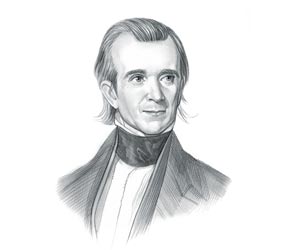|
|
|
|
|
Westward expansion was enabled by buying land, wars, treaties and the displacement of Native American Indians. The rapid settlement of territories gained during the process of Westward Expansion was made possible by progressive transportation systems such as roads, canals and the railroads and the belief in the Manifest Destiny of the United States of America.
When did Westward Expansion begin?
When did Westward Expansion end?
Who was involved in the Westward Expansion?
Reasons for Westward Expansion
Westward
Expansion and Manifest Destiny for kids
Westward Expansion Timeline and Facts for kids 1783: The War of Independence (1775–1783) ends, and the U.S. acquires the first 13 colonies in the east by the 1783 Treaty of Paris that establishes the first U.S. boundaries 1800: The towns and cities increased and methods of transport included the stagecoach - Cities and Travel 1803: The Louisiana Purchase of land from France extends US lands from the Mississippi River to the Rocky Mountains between the Canadian border and the Gulf of Mexico 1804: The Lewis and Clark Expedition explores and map the US lands bought in the 1803 Louisiana Purchase 1807: The invention of steam engines result in Steamboats appearing on western rivers 1811: The Construction of the Cumberland Road began in Maryland and stretched 600 miles into the Northwest Territory. 1812: The era of road building introduced the system of Turnpikes (Toll Roads) 1812: The War of 1812 resulted in the people of America thinking of itself as a unified and strong nation increasing the urge for Westward Expansion 1813: The Creek War (1813–1814) resulted in the vast cession of Creek lands in Alabama and Georgia 1817:The economic plan introduced by Henry Clay, called the American System, was aimed at creating a subsidized transportation infrastructure of new roads and canals 1817: Construction of the Erie Canal begins that stretched for 363 miles allowing the passage of boats inland carrying produce and passengers from the Atlantic Ocean to Lake Erie 1818: The 1818 Convention and Treaty with the British establishes the border with Canada at the 49th Parallel 1819: The Florida Treaty, aka the Adams Onis Treaty, set the boundary between the US and New Spain (now Mexico) 1820: The 1820 Land Act led to the future confiscation of lands from Native Americans and lower cost land for settlers in the west 1821: The 900 mile trade route, the Santa Fe Trail, opens from Independence, Missouri, to Santa Fe (now New Mexico). 1823: The Monroe Doctrine stated that attempts by European nations to colonize land in North or South America, would be viewed as acts of aggression 1824: The 1824 General Survey Act authorized the president to have surveys made of important transportation routes 1828: The Railroads: The 'Stourbridge Lion' was the first operational locomotive on an American railroad 1830: The 1830 Indian Removal Act led to the forced migration of approximately 60,000 Native Americans 1830: Between 1830 to 1840 the forced migration included the terrible journey of the Creek nation on the infamous Trail of Tears 1832: The first Horsecar line is built in Lower Manhattan 1843: The first Important migration of settlers traveled in Wagon Trains along the 2000 mile Oregon Trail 1844: The First Telegraph line is established and Morse Code is sent by Samuel Morse from Washington to Baltimore 1845: Congress passed Texas Annexation, a "Joint Resolution for Annexing Texas to the United States" 1845: 1845: John O’Sullivan initiates the phrase 'Manifest Destiny' 1846: The Mexican-American War begins, also known as the Invasion of Mexico 1846: The Bear Flag Revolt against Mexico in Alta California 1846: 1846: The Oregon Treaty settled the lands south of the 49th parallel as a US possession 1846: Brigham Young leads 5,000 Mormons to Utah after experiencing religious persecution 1848: The Treaty of Guadalupe Hidalgo by which Mexico ceded Upper California and New Mexico to the United States that covered 525,000 square miles for a payment of $15,000,000 1848: The California Gold Rush (1848–1855) started when gold was discovered at Sutter's Lumber Mill in Coloma, California 1849: The first conflicts of the Apache Wars (1849 -1924) erupted in the Southwest 1853: The Gadsden Purchase acquires territory in Arizona and New Mexico 1854: The Sioux Wars (1854 - 1890) led by Crazy Horse and Sitting Bull break out in South Dakota, Minnesota and Wyoming 1854: The Treaty of Kanagawa with Japan extended the belief of Manifest Destiny and began a tradition of "Gunboat diplomacy". 1854: The Ostend Manifesto planned for the annexation of Cuba from Spain 1860: The short lived Pony Express was established as the most direct means of east–west communication before the telegraph was established 1862: The Homestead Act of 1862 encouraged 600,000 families to travel westwards by giving them land (usually 160 acres) almost free 1867: Purchase of Alaska: Alaska was purchased from Russia for $7.2 million 1869: The Transcontinental Railroad was completed joining the eastern and western parts of the United States 1872: The Manifest Destiny Painting called American Progress "Spirit of the Frontier" was painted by John Gast 1879: The Exodusters and the mass migration of African Americans to Kansas 1898: Queen Liliuokalani was deposed leading to the Hawaii. 1912: Arizona was admitted to the Union as the last of the 48 contiguous (adjoining) states. |
| US American History |
| 1841-1850: Westward Expansion |
|
|
|
|
|
First Published2016-04-19 | |||
|
Updated 2018-01-01 |
Publisher
Siteseen Limited
| ||
|
|

